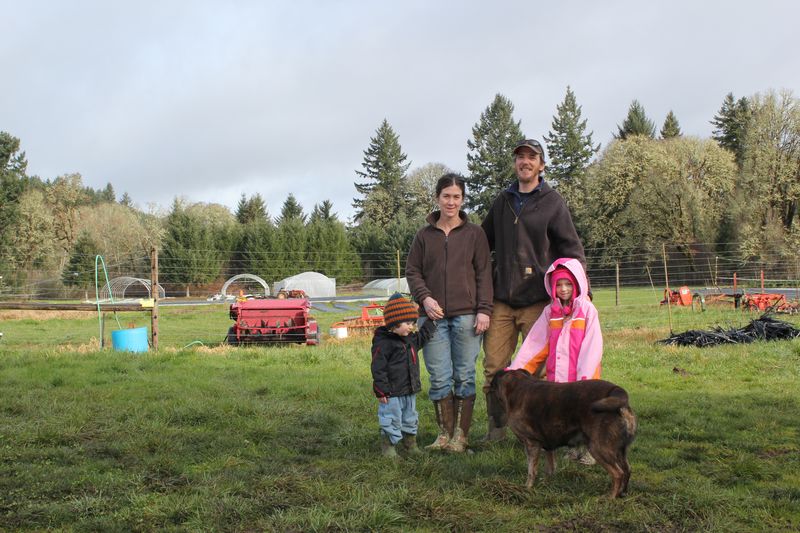Creative Growers Organic Farm is just your average innovator
- by Vera Chang
By Vera Chang, West Coast Fellow for Bon Appétit Management Company Foundation

As West Coast Fellow, I’ve been traveling to some of Bon Appétit’s 1,000 Farm to Fork partners to understand their on-the-ground practices and challenges. I met farmer David Hoyle in between attending the Food Justice Conference in Eugene and presenting Stories from the Fields, about farm worker issues, at Lewis & Clark College. Dave and I chatted for a while in the rain on his farm, Creative Growers, tucked away in the back roads of Noti, Oregon.
Dave says he’s immune to the rain, having worked outside for so many years. I try my best to ignore its cold bite while Dave tells me about how he runs what he calls a "typical small, organic, Oregonian, family farm."
The name, Creative Growers, came along with the purchase of the land but isn’t quite right, Dave says, because they’re not that different from other farms in the area. He and his wife Lori are practical, down-to-earth, and fiercely independent people who make up rules as they go along. They farm 20 acres and grow forty-five plus crops and focus primarily on heirloom and European vegetable varieties.
The carrots and other veggies they grow are clean enough for his kids to pull and eat straight from the ground, he says. When they first started farming, growing heirloom vegetables like Brandywine tomatoes and European varieties such as Mara des Bois French strawberries for restaurants was novel but now such specialty varieties are popping up everywhere.
Regarding labor: Dave and Lori work in the fields alongside their employees and don’t give their employees any tasks that they wouldn’t do themselves. Dave says he wishes that Creative Growers had the infrastructure to offer more than one employee year-round employment and to start workers’ pay rate higher than $9.25, even though that's competitive for the region. No one on the farm, including the Hoyle family, has health insurance yet. But Dave values building relationships with his employees, and does small things that add up, he tells me. Dave and Lori take their employees out for birthday celebrations at the same restaurants that serve their gorgeous produce. And they built a cabin on the land, which they offer to the farm crew leader to live in, free of charge.
Creative Growers may be typical of small farms in this region, but it doesn’t make Dave and Lori and the others like them any less admirable. The struggles that go into the fresh local food so beautifully showcased on restaurant plates usually stay hidden back on the farm. Picking up on Dave’s comment, I think all farmers and farmworkers are Creative Growers, coming up with innovative solutions to feed us and our communities.